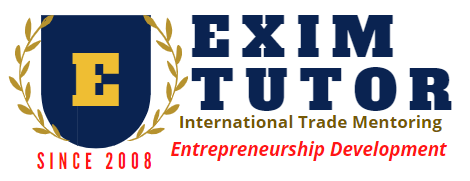Global Demand for Textile Goods: Trends, Drivers, and Opportunities
The textile industry is one of the oldest yet most dynamic industries in the world, serving as the backbone of fashion, apparel, home furnishings, and industrial applications. Over the past few decades, global demand for textile goods has continued to rise, driven by population growth, increasing disposable incomes, lifestyle changes, and innovations in fabric technology. Today, the textile sector not only caters to traditional clothing needs but also contributes significantly to technical textiles, sustainable fabrics, and e-commerce-driven retail.
1. Global Market Overview
The worldwide textile market is valued in the trillions of dollars and continues to grow steadily, supported by both developed and emerging economies. The Asia-Pacific region dominates textile production and consumption, with countries like China, India, Bangladesh, and Vietnam leading in manufacturing due to cost advantages and established supply chains. Meanwhile, North America and Europe remain major importers, focusing on high-quality, branded apparel and technical textiles.
According to industry estimates, the global textile market is expected to grow at a CAGR of around 4–5% over the next decade, reaching record levels by 2035. The rising demand is not limited to apparel alone but also spans across healthcare, automotive, defense, construction, and home décor industries.
2. Key Drivers of Demand
a) Population Growth & Urbanization
With the world population expected to cross 8.5 billion by 2030, the need for clothing and home textiles will continue to rise. Urbanization further fuels demand as people adopt modern lifestyles, fashion trends, and home furnishing products.
b) Rising Disposable Incomes
Emerging economies such as India, Indonesia, Nigeria, and Brazil are witnessing rapid growth in middle-class populations. This demographic shift is leading to higher spending on fashion, branded apparel, and lifestyle textiles.
c) Fast Fashion & E-commerce Boom
Global fashion retailers and online platforms like Zara, H&M, Shein, and Amazon have accelerated textile demand through affordable fast-fashion cycles and easy online shopping access. E-commerce is expected to drive a significant share of textile trade in the coming years, especially in emerging markets.
d) Technical & Industrial Textiles
Beyond apparel, technical textiles are in high demand for sectors such as healthcare (surgical masks, gowns, bandages), automotive (seat covers, airbags), defense (protective gear, uniforms), and construction (geotextiles, insulation materials). These specialized products are expected to grow faster than traditional clothing textiles.
e) Sustainability & Eco-Friendly Fabrics
Environmental concerns and rising consumer awareness are driving demand for organic cotton, recycled polyester, bamboo fabrics, and other sustainable materials. Brands are investing heavily in circular fashion models, which emphasize recycling, reuse, and eco-friendly production.
3. Regional Insights
- Asia-Pacific: Largest textile producer and exporter. China leads in synthetic fabrics, while India excels in cotton and handloom. Bangladesh and Vietnam dominate low-cost apparel manufacturing.
- Europe: Strong in technical textiles, luxury fabrics, and sustainable fashion initiatives. Countries like Italy, France, and Germany focus on high-value textiles.
- North America: Major importer with strong demand for branded apparel and home furnishings. The U.S. also invests heavily in research on advanced textiles.
- Middle East & Africa: Growing demand for textiles due to rising incomes and infrastructure development. Countries like Turkey and Egypt are significant exporters.
- South America: Brazil, Peru, and Argentina contribute significantly in cotton and blended fabrics, catering both to local and international markets.
4. Opportunities and Future Outlook
- Digital Transformation: Smart textiles with embedded sensors, wearables, and AI-driven fashion are becoming popular in global markets.
- Sustainability: Eco-friendly fabrics and green supply chains present new business opportunities for forward-looking manufacturers.
- E-commerce Growth: Online platforms are expanding market access for small and mid-sized textile exporters worldwide.
- Rising Healthcare & Safety Needs: Demand for protective clothing, medical textiles, and hygiene products will remain strong post-pandemic.
- Customization & Personalization: Consumers are increasingly seeking customized apparel and home décor textiles, fueling niche markets.
5. Challenges to Consider
- Raw Material Price Volatility: Cotton, polyester, and wool prices fluctuate with climate change and global energy costs.
- Environmental Regulations: Stricter rules on water usage, dyeing processes, and waste disposal may raise production costs.
- Trade Barriers & Tariffs: Anti-dumping duties, safeguard tariffs, and shifting trade policies can disrupt global supply chains.
- Labor Issues: Dependence on low-cost labor raises concerns over wages, working conditions, and ethical sourcing.
Conclusion
Global demand for textile goods continues to rise, powered by population growth, fast fashion, industrial applications, and sustainable innovations. While Asia remains the powerhouse of production, consumer markets in Europe, North America, and emerging economies are shaping future trends. The textile industry is at a transformative stage, where sustainability, digitalization, and value-added products will define competitiveness.
For businesses, this is both a challenge and an opportunity: adapt to changing consumer behavior, invest in sustainable practices, and embrace innovation to thrive in a rapidly evolving global textile marketplace.
